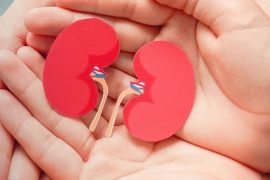In India, September is a special month known as Rashtriya Poshan Maah or National Nutrition Month. It serves as a time to celebrate the rich heritage of traditional Indian cuisine, filled with locally sourced ingredients and recipes that evoke cherished memories of childhood. These dishes, passed down through generations, hold a special place in the hearts of many. However, in today’s age, where we are inundated with a vast amount of the nutritional information, there are misconceptions surrounding these traditional dietary treasures.
Dr. Neeta Deshpande, the Chief Medical Officer, and Rahul Maroli, the CEO and Founder of Elevate Now, have taken it upon themselves to debunk these misconceptions. They aim to highlight the nutritional value and affordability of these local gems. One common misunderstanding is that traditional foods are outdated and unhealthy. In reality, they often incorporate wholesome, seasonal ingredients and time-tested recipes that can be highly nutritious.
The misconception that traditional diets lack variety is also debunked. India’s diverse regional cuisines offer a wide range of flavors, ingredients, and cooking techniques to explore. It’s important to strike a balance between modern superfoods and traditional foods, as both can be beneficial. Traditional diets can also be adjusted for weight management by controlling portion sizes and incorporating a variety of foods.
1. Imported Superfoods vs Local Legends:
The comparison between Imported Superfoods and Local Legends reveals a hidden nutritional treasure in our local produce. While imported superfoods like berries and avocados are popular for their health benefits, lesser-known facts about local fruits like jamuns and guavas reveal they often contain even higher nutritional value, with robust antioxidant properties. Similarly, the widely celebrated superfood quinoa is overshadowed by the local gem, Amaranth, which offers substantially higher proportions of protein, iron, magnesium, and potassium, all at a significantly lower cost. This highlights the importance of exploring and appreciating the nutritional richness of indigenous ingredients while making sustainable and budget-friendly choices for a healthier lifestyle.
2. The Carbohydrate Conundrum:
The Carbohydrate Conundrum highlights important findings from research in India regarding carbohydrate consumption and its impact on health. The STARCH study in 2014 revealed that the Indian population obtained a significant 64.1% of their energy from carbohydrates, surpassing the recommended limit of 60%. This finding is closely related to the ICMR-INDIAB national study, which showed that reducing daily carbohydrate intake by 15% led to diabetes remission in about 66% of participants. However, it’s essential to understand that not all carbohydrates are created equal.
Processed foods with easily absorbable carbs can cause rapid spikes in blood sugar levels, whereas fiber-rich carbs from whole grains, legumes, vegetables, and fruits play a crucial role in regulating blood sugar, managing cholesterol levels, and promoting healthy digestion. These fiber-rich carbohydrates have consistently been associated with better overall health and longevity. This information underscores the importance of making informed dietary choices to maintain optimal health.
3. Fats:
Fats are neither purely villains nor heroes; their impact on health depends on their type and quantity.
- Trans fats: These are often found in processed foods and are detrimental to health. They increase the risk of heart disease, insulin resistance, and elevated cholesterol levels. Trans fats are generally considered villains and should be avoided as much as possible.
- Saturated fats: These fats are present in a wide variety of foods and should be consumed in moderation. They are linked to increasing LDL or “bad” cholesterol levels, which can contribute to heart disease. So, while not outright villains, they are best limited in the diet.
- Monounsaturated and polyunsaturated fats: These are the heroes of the fat story. They are found in nuts, eggs, cheese, yogurt, olive oil, groundnut oil, and fatty fish. When consumed in appropriate amounts, they offer various health benefits, including improved heart health. These fats should be a part of a balanced diet.
4. The Vegetarian Protein Puzzle:
Indian vegetarian cuisine is not lacking in protein. For instance, a cup of whole lentils contains approximately 18 grams of protein, which is nearly equivalent to the protein content found in 100 grams of chicken. Additionally, legumes such as chickpeas and kidney beans offer both protein and fiber. By incorporating other protein-rich sources like soya chunks, paneer (cottage cheese), black chanas (black chickpeas), and peanuts into their diets, individuals can ensure a well-balanced vegetarian diet. However, for those following a low-calorie vegetarian regimen, protein supplements may be necessary to meet daily dietary protein requirements.
5. Modern Lifestyles and The Vitamin Challenge:
In the face of modern lifestyles and their potential impact on the nutrition, it’s important to debunk the misconception that they inevitably lead to vitamin deficiencies. This passage emphasizes the diverse range of nutrient-rich foods available to us. Millets like iron-rich foxtail and calcium-laden ragi are hailed as unsung heroes of Indian cuisine. Additionally, staples like spinach, a Vitamin K powerhouse, and bananas, packed with potassium, contribute to a balanced diet. The passage underscores the importance of seeking guidance from healthcare professionals, especially for individuals with specific health conditions like diabetes and obesity, who need to consider factors like the glycemic index of foods in their dietary choices.
By making informed decisions and embracing the richness of local, nutrient-dense foods, we can pave the way for better health and an improved quality of life during National Nutrition Month. It’s a reminder that everyone’s health journey is unique, highlighting the need to consult certified nutritionists or dieticians for personalized advice.
Disclaimer:
The information contained in this article is for educational and informational purposes only and is not intended as a health advice. We would ask you to consult a qualified professional or medical expert to gain additional knowledge before you choose to consume any product or perform any exercise.








